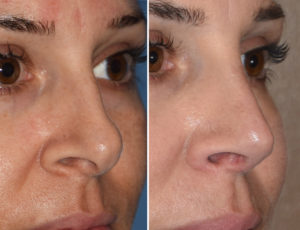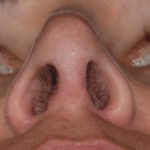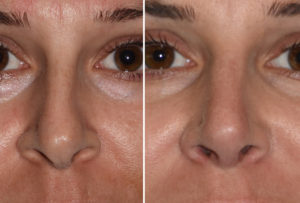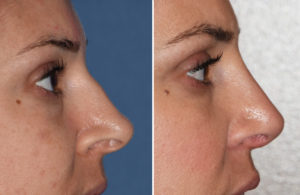Background: Rhinoplasty changes the shape of a wide variety of noses. This is why a large number of nasal reshaping techniques exist and the ‘cookie cutter’ approach to rhinoplasty surgery will leave some patients wanting. Besides identifying what anatomic structures create the nasal shape seen, it is also important to recognize what effects modifying the structural support of a nose will do. Failure to do ends up with indentations and asymmetries long term as scar tissue contraction distorts a weakened cartilage structure.
One such nose that poses a challenge is the long skinny nose. It has excessive cartilage length but at the same time the lower alar cartilages are thinner and structurally weak. The nasal skin is almost always very thin revealing any irregularities underneath it. Shortening the tip of such a nose is fraught with the potential for lower alar collapse and notching.
Case Study: This petite young female presented for rhinoplasty with the following aesthetic deformities; a small nasal hump, an overprotected nasal tip, an irregular dorsal line, nasal asymmetry, left middle vault collapse, alar rim retraction and widely flaring nostrils. She had no breathing difficulties.


Highlights:
1) The long thin nose is a challenge in rhinoplasty that requires both reduction as well as adding structural support.
2) Deprojecting the kong thin tip must be done carefully to avoid over rotation and weakening of the low alar crura.
3) Spreader grafts can help widen the middle vault in a thin nose as well as improve asymmetry.
Dr. Barry Eppley
Indianapolis, Indiana




